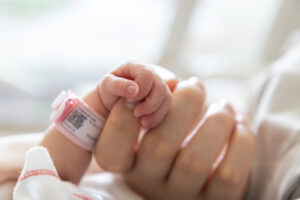A recent trip to the emergency room for Maryland resident Stuart Anders created a situation that might soon become more common—the recovering addict pleaded with E.R. doctors to NOT be given opioid painkillers even though his leg had been literally shattered in a car accident.
For many suffering from debilitating pain, it all depends on where they end up for treatment. Luckily, Mr. Anders found himself at a Baltimore hospital that offers options to opioid use. In his case, the pain was controlled with a strong, numbing anesthetic that was capable of being delivered directly to his leg only through the use of an ultrasound-guided nerve block.
Unfortunately, not all hospitals are able to offer such alternatives—possibly introducing or perpetuating an opioid addiction. Additionally, most alternatives are considered experimental at best, case in point is a New Jersey emergency room that relies on laughing gas and even an on-call harpist (yes, I’m referring to someone who plays a harp) for reducing pain. Yet St. Joseph’s Regional Medical Center in Paterson is actually one of the leading purveyors of opioid alternatives at one of the country’s busiest E.R.s.
Such unconventional measures make the acupuncture and trigger-point therapies of other hospitals seem pedestrian, yet one might wonder why there’s such a leap from the conventions of western medicine to the totally unconventional. The answer is that most doctors don’t believe there are true replacements for the effective pain relief offered by drugs such as Percocet, Vicodin, Dilaudid and even morphine. Of course, emergency room doctors claim they don’t even write five percent of all opioid prescriptions, and that primary physicians are more to blame for unnecessary refills that are contributing to the skyrocketing dependency our Nation is facing. Yet others point out that the path to addiction usually starts with an acute injury that’s treated in the E.R. The question is, how as a medical profession and as a society can we break this cycle?
The Centers for Disease Control and Prevention has shared that in 2014 there were 14,838 overdose deaths related to prescription opioids. And data released this past February shows that the number has continued to rise. So are the alternative pain-treating methods of some hospitals working? According to St. Joseph’s in Paterson, New Jersey — yes. Currently the hospital claims a reduction in opioid emergency room use by 38 percent with 75 percent of patients stating that the alternative treatments were effective enough to avoid reliance on an opioid. The question still remains as to whether or not this is a big enough leap forward to leave behind the risk of prescription-induced addictions.
@thumbnail.jpg)
Both an Emory School of Law graduate and MBA graduate of Goizueta Business School at Emory, Chris Nace focuses his practice on areas of medical malpractice, drug and product liability, motor vehicle accidents, wrongful death, employment discrimination and other negligence and personal injury matters.










Comments for this article are closed.